Kommos, a seaport in southern Crete, was instrumental in trade from the Near East and other neighboring areas during the Late Minoan period. Kommos was near the notable Minoan palace Phaistos. Excavations of Kommos began in 1976, and includes the work of Leyland Hugh Sackett, whose collection provides some of the slides below. Sackett was a part of many excavations which led to his major contributions to Greek History and Art History. Notably, he was a part of excavations at Knossos, Lefkandi, and Attica (Cadogan 2020). Below are some images from his time at Kommos in 1976. Due to its heavy trade, the excavation of Kommos grants archeological insight in many regards, from foreign antiquities to Minoan architectural design. In this exhibit The Excavation of Kommos Through Sackett’s Lens, you will hopefully situate yourself in the excavated ruins of Kommos, and learn a little about the many discoveries which have come forth in the midst of Kommos.
Views of Excavated Kommos
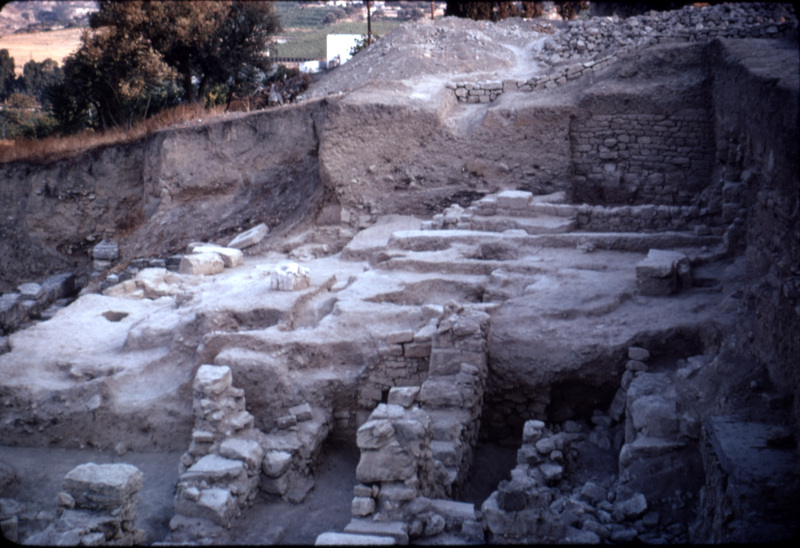
Unlike the unexcavated city of Eleutherae, Kommos can be identified here by the signs of excavation and date of the ruins. In the background of this image one can see evidence of ashlar blocks which were used for bases in palaces like Phaistos. These blocks may seem to indicate an origination of this technique to some, but this stance is contested due to the lack of consistent use of ashlar masonry throughout the buildings. The ashlar masonry does cement the ruins of Kommos, at least in some buildings to the Neopalatial (Late Minoan III) period (Shaw 2013).
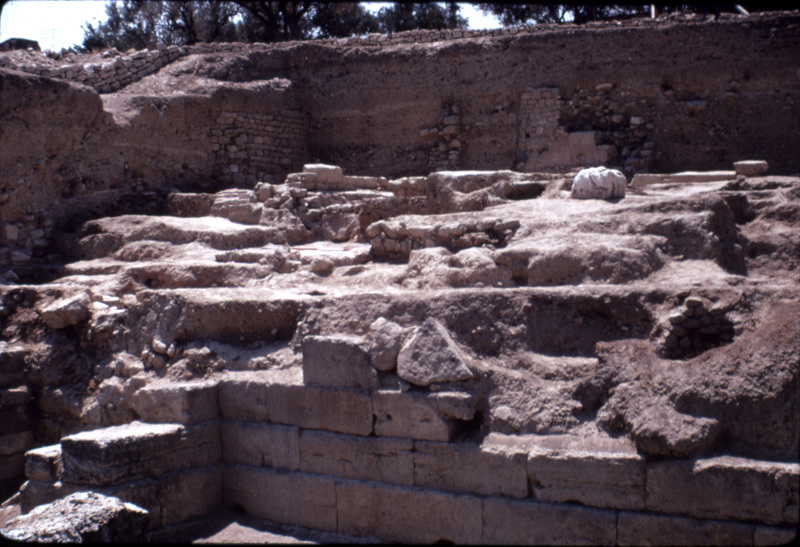
Similar to the previous image, this view of the ruins of Kommos provides reference to the ashlar masonry and gypsum column bases. Here there is indication also of the differentiated uses of space through the articulation of walls to separate and configure the buildings. While indistinguishable from this photo, Kommos buildings notably used the creation of a hearth for domestic and ceremonial purposes. The hearth is one of many built features in addition to kernoi (vessels for deities) which demonstrate the intentional design of architecture to fit daily practices, even if the physical layouts vary from building to building (Letesson, 2015).
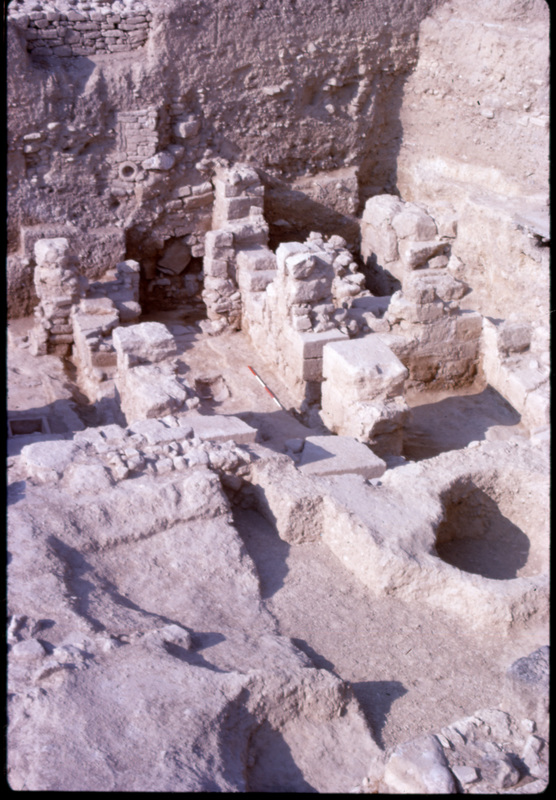
The excavations which Sackett participated in during subsequent years to 1976 were driven by the motivation to understand the found architecture of Kommos which was not Classicizing. It is speculated that these preserved walls were covered in sand and perhaps used at later periods before being excavated in the late 20th century (Shaw 1978, “Excavations''). Over the course of many years, excavators returned to Kommos due to the intricacies of the layout and to speculate as to the purposes of design. Like the hearths and kernoi that were found and discussed by Letesson, altars were also commonly found in the ruins of the Kommos domestic sphere. One discovery found in Kommos during the 1977 excavation suggested the possible first votive animal; however, due to reuse of these spaces in later periods many other items have been found that do not correlate to the supposed time of Kommos’ construction and main dwelling.
Landscape of Kommos
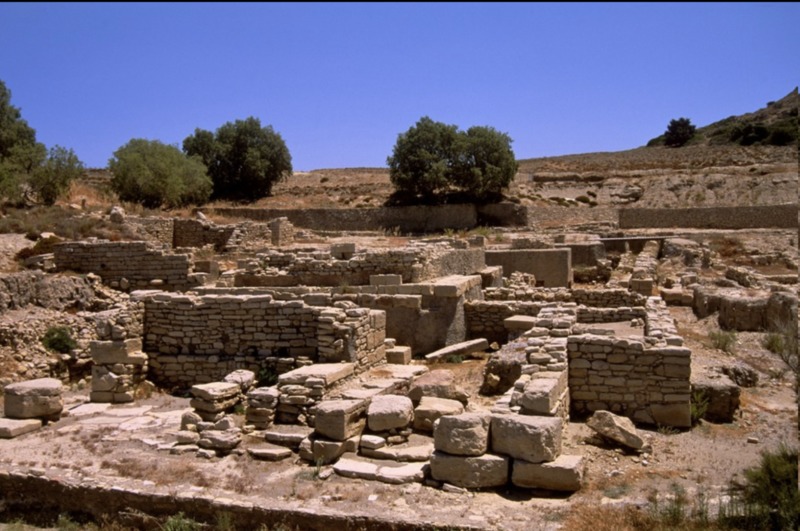
Kommos is situated on the Southern coast of Crete in between a grouping of hills. Due to its location around the coast, it was a prime area for trade, but also for agriculture (Shaw, 1978, “Kommos”). Due to many items which may have been present due to trade Kommos was robbed throughout the later periods into the modern period. With this robbing of artifacts, the upper stone walls were also possibly carried away (Shaw 1978, “Kommos”). Kommos is thought to have been abandoned at the end of the Late Minoan period; however, due to location merchants were drawn back to the space in the 10th century perhaps accounting for the loss of items and stones at the location of Kommos (Csapo 1991).
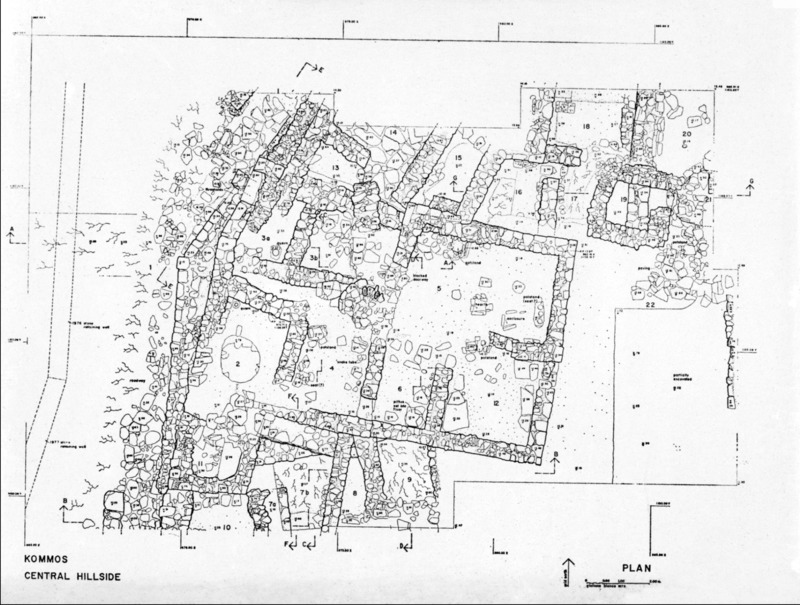
The lack of palatial indicators at Kommos establish the buildings as that of a settlement rather than a palace like Hagia Triada or Phaistos further inland (Shaw 1978 “Kommos”). This means that in understanding the architecture and structural components of Kommos one can get a look into Minoan life, particularly of a port town and place of agriculture.
Cretan Pottery of the Time
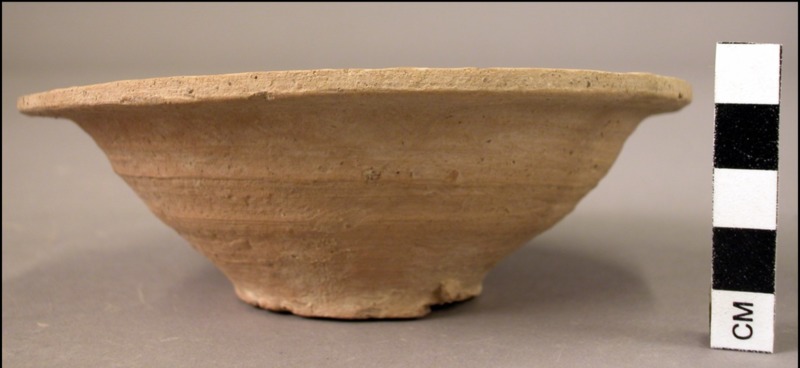
The excavations of Kommos through the late 20th century discovered immense pottery and items of foreign import from many places within and outside of the Aegean. Some imports included origins from Anatolia, Egypt, and Aegean Islands among others (Tomlinson 2010). This piece above represents pottery from the initial period of Kommos’ inhabitance. However, this piece, unlike much of what was found in Kommos, is of Cretan origin, rather than foreign origin. Kommos was rich in imports due to its location in connection to the palace of Phaistos.
Kate Langley '23